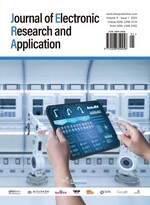Study on the Hydraulic Performance and Efficiency of a Siphon Sediment Discharge Device with Bottom Hole Opening through Simulation Experiments
Abstract
In this study, the hydraulic behavior and sand transport efficiency of the siphon automatic sand discharge device were studied by software simulation tests. By simulating the actual situation, this study analyzed how factors such as the difference in water level, sediment concentration, and pipeline layout affected the sediment discharge effect. The results show that the sediment discharge device can effectively discharge sediment under diverse operating conditions and show adaptability to different environmental conditions, which indicates that it is suitable for various types of reservoir environments.
References
Wang Z, Yue W, Wang S, et al., 2019, Review the Development Trend of Ecological Restoration in International Watersheds and Its Reference Significance. Geographical Science Research, 8(2): 221–233.
Guo L, Pan D, Hu X, et al., 2009, Lagrangian Numerical Simulation for Solid-Liquid Two-Phase Flow in a Curved Duct. Int. J. of Engineering Systems Modelling and Simulation, 1(2/3): 137–143.
Fan X, Tan D, Li L, et al., 2021, Modeling and Solution Method of Gas-Liquid-Solid Three-Phase Flow Mixing. Acta Physica Sinica, 70: 124501.
Lee KY, Kim WS, 2017, Study of Siphon Breaker Experiment and Simulation for a Research Reactor. Journal of Visualized Experiments: JoVE, 2017(127): 55972.
Sapkota A, Takei M, Yamane T, et al., 2011, Impedance Spectroscopic Measurement of Particle Concentration in Solid-Liquid Two-Phase Flow. Journal of the Japanese Society for Experimental Mechanics, 11(Special_Issue): s162–s167.
Agbanlog RC, Chen G, 2014, Mini Hydro-Electric Power Plant with Re-Circulated Water Power Source. IIE Annual Conference, Proceedings, 2014: 2145–2154.
Park YC, Yoon CH, Lee DK, 2004, Experimental Studies on Hydraulic Lifting of Solid-liquid Two-phase Flow. Ocean and Polar Research, 26(4): 647–653.
Lu YX, Li GX, Liu MJ, et al., 2015, Numerical Simulation of Flow Fluid in Elbow Pipe Based on FLUENT and the Establishment of the Pressure Model. Applied Mechanics and Materials, 3744(713–715): 39–42.
Brahim M, Keddar M, Mariam I, et al., 2023, A CFD Examination of Free Convective Flow of a Non-Newtonian Viscoplastic Fluid Using ANSYS Fluent. Arabian Journal of Chemistry, 16(12): 105309.
Davarpanah A, Zarei M, Valizadeh K, et al., 2019, CFD Design and Simulation of Ethylene Dichloride (EDC) Thermal Cracking Reactor. Energy Sources, Part A: Recovery, Utilization, and Environmental Effects, 41(13): 1573–1587.
Gallerano F, Cannata G, 2011, Compatibility of Reservoir Sediment Flushing and River Protection. Journal of Hydraulic Engineering, 137(10): 1111–1125.
Yoshihiko S, Shuji I, Study on a Channel Formation Process in Double-Row Bars with Riparian Vegetation. Journal of Japan Society of Civil Engineers, Ser. B1 (Hydraulic Engineering), 69(4): I_1153–I_1158.
Kulik VV, Parkin NA, Navasardyan SE, 2016, Numerical Modeling Procedure for Micromachined Cryogenic Cooler Elements Using ANSYS Fluent Software and Viscous Flow in a Small-Diameter Channel with Heat Transfer as an Example. Chemical and Petroleum Engineering, 52(7–8): 531–538.
Zuo J, Yang H, Wei B, et al., 2020, Numerical Simulation of Gas-Liquid Two-Phase Flow in Gas Lift System. Acta Physica Sinica, 69: 064705.

